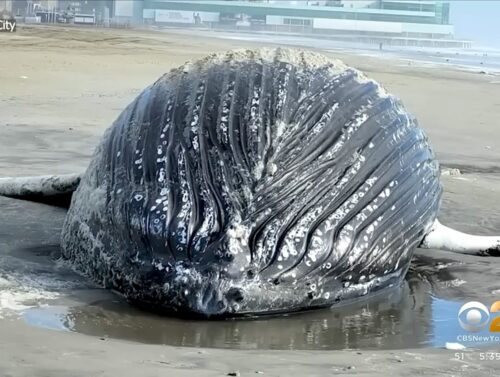
The grand experiment has failed.
New York’s decision to approve a major natural gas pipeline is a referendum on a policy regime that was based more in fantasy than the real world. [some emphasis, links added]
On the pipeline approval, Gov. Kathy Hochul’s office said “we need to govern in reality,” and that the “top priority is making sure the lights and heat stay on for all New Yorkers as we face potential energy shortages downstate as soon as next summer.”
For years, campaigners insisted the Northeast could stop investing in natural gas and keep energy costs in check. Many actually claimed the result would be lower prices for homes and businesses, contrary to basic economics and physics.
An activist with the Sierra Club said nearly a decade ago that “if we can forestall gas infrastructure being put in the ground and locking in that demand for the next 60 years, the hope is that renewables will come in and be cost competitive in all markets.”
New York and New England took the bait. Fracking bans and permit rejections for new pipelines were sold as the path toward a cleaner and cheaper energy future.
None of that happened.
In 2024, the price that New York homes paid for natural gas was $2 more than the national average. Over the past decade, prices in the Empire State have increased by nearly 50 percent.
In Massachusetts, prices have increased a whopping 67 percent. Other New England states have seen similar increases that outpaced the rest of the country.
The region has invested significantly in renewables, and recent federal policy changes have fundamentally changed its outlook. You can’t fault people for not being able to predict the future.
But it’s also worth noting that grid operators were raising cost and reliability concerns long before President Trump came into office.
Many states effectively balance high renewable penetration with lower energy costs. They just avoid things like gas stove bans and hostility to new power plants.
The issue isn’t wind and solar. It’s pretending that limiting energy choices will reduce prices.
The New York pipeline approval is part of a broader pendulum swing nationwide, where idealism is being replaced with, as Governor Hochul said, governing in reality.
Connecticut’s governor earlier this year acknowledged the role that natural gas will play for the foreseeable future.
Two years ago, California regulators voted unanimously to expand gas storage in Aliso Canyon to ensure reliability.
During the recent elections, energy affordability was a major theme. The winners of the gubernatorial elections in New Jersey and Virginia both indicated a greater openness to natural gas as part of a more balanced energy mix.
The bottom line: you can’t limit access to the most affordable fuel and expect lower energy prices. Those who continue to say so are not arguing with “the industry,” but rather the overwhelming amount of data in front of us.
h/t Jake R.
Read more at LinkedIn



















Forgetting about global warming ALTOGETHER!
High Volume Horizontal HydroFracking is a dangerous Indistrial process THAT POISONS NATURAL FRESH DRINKING WATER, A Commodity worth MUCH MUCH MUCH MORE, than the profits gained by gas companies and the graft they pay to politicians who push for them.
Drill for gas, fine, but LIMIT the amount and the profit if that is what it takes to protect water, AND BANNING HORIZONTAL HYDROFRACKING IS WHAT IT TAKES To Protect Drinking WATER.
It does not make sense to limit natural gas. Methane, the main component, releases the least carbon dioxide per unit of energy when burned than any other fossil fuel. It is very efficient to burn methane at the point of use for heating, cooking, and hot water. Using electric power involves the cost and energy loses of generators and transformers. The motivation for banning natural gas is the goal of reaching net zero, but that is a fantasy.
The combination of wind droughts and lack of grid-scale storage make the transition to intermittent wind and solar power impossible.
Wind and solar are not fit for purpose, any more than steam engines can drive rockets.
https://rafechampion.substack.com/p/are-wind-and-solar-power-fit-for
https://rafechampion.substack.com/p/the-late-discovery-of-wind-droughts
Dirt farmers are alert to the threat of rain droughts, but the wind farmers never checked the reliability of the wind supply.
https://rafechampion.substack.com/p/we-have-to-talk-about-wind-droughts
Wind droughts become an existential threat to thousands or tens of thousands of people when the wind drought trap closes on a windless night during extreme weather conditions. See Texas in February 2021! Fluctuations in solar and wind input pose the same threat in the daytime where grids lack inertia, see the pain in Spain, 2025.
https://rafechampion.substack.com/p/defusing-the-wind-drought-trap
Given the incredible costs (as well as lack of the lithium and other minerals in the required quantities) there is no way that we could ever install a grid-scale storage. But would also be required is a very large addition of wind turbines and solar panels to be able to charge those (non-existing) batteries when it’s needed.
We don’t need any Wind Turbines or Solar Panels we need Common Sense